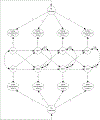Family environment and self-esteem development: A longitudinal study from age 10 to 16
- PMID: 31535888
- PMCID: PMC7080605
- DOI: 10.1037/pspp0000263
Family environment and self-esteem development: A longitudinal study from age 10 to 16
Abstract
In this study, we examined the effect of family environment on self-esteem development from late childhood (age 10) through adolescence (age 16), using 4-wave longitudinal data from 674 Mexican-origin families living in the United States. To assess family environment, a multi-informant approach was used (i.e., mother, father, and child) to construct latent variables that minimize the influence of response biases. Using cross-lagged panel models (CLPMs) and random intercepts cross-lagged panel models (RI-CLPMs), we tested the prospective effects of parenting behaviors (warmth, hostility, monitoring, and involvement in child's education) and other characteristics of the family environment (quality of parental relationship, positive family values, maternal and paternal depression, economic conditions of the family, and presence of father). In the CLPMs, significant positive effects on children's self-esteem emerged for warmth, monitoring, low maternal depression, economic security (vs. hardship), and presence (vs. absence) of father. With regard to the reciprocal effects, children's self-esteem predicted positive family values (i.e., importance and centrality of the family) of mother and father. In the RI-CLPMs, the pattern of results was similar (in terms of point estimates of the effects); however, only the effects of maternal depression on child self-esteem, and the effect of child self-esteem on family values of father, were statistically significant. In all models, the effects did not differ significantly for boys and girls, or across ages 10 to 16. The findings suggest that multiple features of the family environment shape the development of self-esteem during late childhood and adolescence. (PsycInfo Database Record (c) 2020 APA, all rights reserved).
Figures



References
-
- Adachi P, & Willoughby T (2015). Interpreting effect sizes when controlling for stability effects in longitudinal autoregressive models: Implications for psychological science. European Journal of Developmental Psychology, 12, 116–128.
-
- Amato PR (1986). Marital conflict, the parent-child relationship and child self-esteem. Family Relations, 35, 403–410.
-
- Amato PR, & Fowler F (2002). Parenting practices, child adjustment, and family diversity. Journal of Marriage and Family, 64, 703–716.
-
- Arbona C, & Power TG (2003). Parental attachment, self-esteem, and antisocial behaviors among African American, European American, and Mexican American adolescents. Journal of Counseling Psychology, 50, 40.

